Comprehensive Guide to Demolition Waste Removal in Haringey
Understanding Demolition Waste
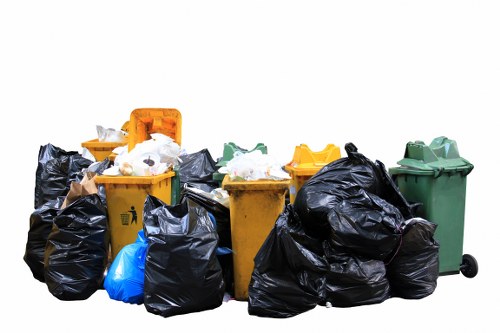
Demolition waste refers to the debris and materials generated during the demolition of buildings and structures. In Haringey, a vibrant borough in North London, managing demolition waste efficiently is crucial for environmental sustainability and community well-being.
Proper demolition waste removal not only ensures compliance with local regulations but also promotes recycling and reduces the environmental footprint of construction activities. Understanding the types of waste and the best practices for their removal can significantly impact the success of any demolition project.
In this article, we will explore the various aspects of demolition waste removal in Haringey, including the types of waste, regulations, removal processes, and the benefits of professional waste management services.
Types of Demolition Waste

Demolition projects generate a wide range of waste materials, each requiring specific handling and disposal methods. The primary types of demolition waste include:
- Concrete and Masonry: These materials are prevalent in building structures and can often be recycled into aggregate for new construction projects.
- Wood: Salvageable wood can be repurposed, while treated or painted wood may require special disposal methods.
- Metals: Metals such as steel and aluminum are highly recyclable and valuable in the recycling market.
- Plastics: Various plastic materials need to be sorted and recycled where possible to minimize environmental impact.
- Hazardous Materials: Items like asbestos, lead paint, and chemicals must be handled with care to prevent environmental contamination.
Properly categorizing and managing these materials is essential for effective demolition waste removal and compliance with Haringey's waste management regulations.
Haringey's Waste Management Regulations
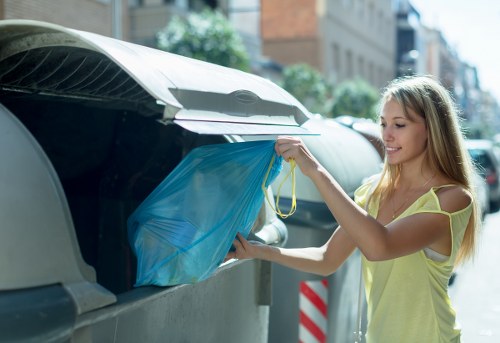
Haringey has established stringent regulations to ensure the responsible removal and disposal of demolition waste. Adhering to these regulations is mandatory for all demolition projects within the borough.
The key regulatory requirements include:
- Waste Transfer Notes: All waste must be accompanied by a Waste Transfer Note, detailing the type and quantity of waste being transported.
- Licensed Waste Carriers: Only licensed waste carriers are permitted to transport demolition waste, ensuring that waste is handled and disposed of appropriately.
- Recycling Targets: Haringey encourages the recycling of demolition waste, with specific targets to reduce landfill usage.
- Hazardous Waste Handling: Special protocols are in place for the removal and disposal of hazardous materials to protect public health and the environment.
Compliance with these regulations not only avoids legal penalties but also contributes to the sustainability goals of the community.
Demolition Waste Removal Process
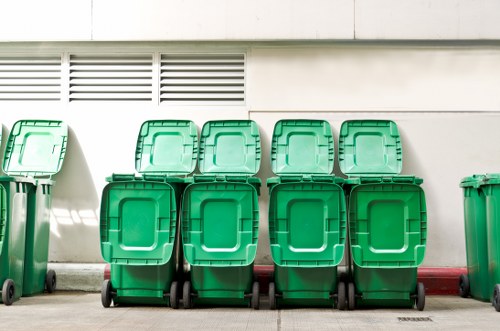
The process of demolition waste removal involves several critical steps to ensure efficiency and compliance with local regulations in Haringey.
1. Planning and Assessment: Before starting the demolition, a thorough assessment of the site is conducted to identify the types and quantities of waste that will be generated.
2. Segregation: Waste materials are segregated on-site to facilitate recycling and proper disposal. Segregation minimizes contamination and maximizes resource recovery.
Choosing the Right Waste Removal Service

Selecting a reputable and experienced demolition waste removal service in Haringey is vital for the success of your project. When choosing a service provider, consider the following factors:
- Licensing and Accreditation: Ensure the company is licensed and complies with all local waste management regulations.
- Experience: An experienced company will have the expertise to handle various types of demolition waste efficiently.
- Recycling Capabilities: Opt for services that prioritize recycling and sustainable disposal methods.
- Transparent Pricing: A transparent pricing structure helps avoid unexpected costs and ensures value for money.
- Customer Reviews: Positive testimonials and reviews can indicate reliable and high-quality service.
Partnering with the right waste removal service ensures that your demolition project is completed smoothly, responsibly, and in line with Haringey's environmental goals.
Benefits of Professional Demolition Waste Removal
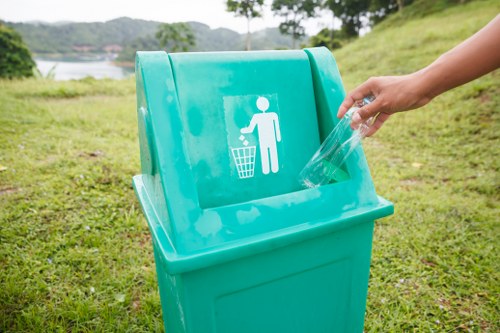
Engaging professional demolition waste removal services offers numerous advantages for both project managers and the community at large.
- Efficiency: Professionals have the tools and expertise to remove waste swiftly, reducing project timelines and associated costs.
- Safety: Proper waste removal minimizes hazards on-site, protecting workers and the surrounding community.
- Environmental Protection: Responsible disposal and recycling practices reduce the environmental impact of demolition activities.
- Compliance: Professional services ensure adherence to all regulatory requirements, avoiding legal complications.
- Cost Savings: Efficient waste management can lead to cost savings through recycling and reduced landfill fees.
Overall, professional demolition waste removal enhances project outcomes and supports sustainable development within Haringey.
Recycling and Sustainability
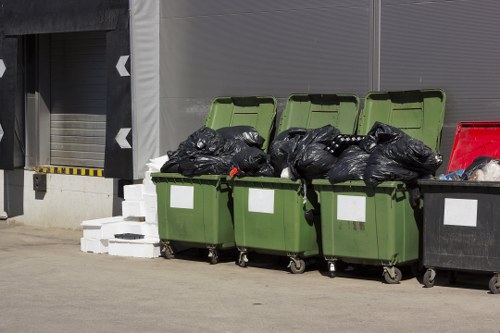
Sustainability is at the forefront of modern demolition practices. By prioritizing recycling, Haringey aims to reduce landfill usage and promote the reuse of valuable materials.
Key aspects of sustainable demolition waste management include:
- Material Recovery: Recovering materials such as metals, concrete, and wood for reuse in new construction projects.
- Minimizing Waste: Strategically planning demolition activities to minimize waste generation.
- Energy Conservation: Recycling materials reduces the energy required to produce new materials, contributing to energy conservation efforts.
- Reduced Carbon Footprint: Sustainable waste management practices help lower the overall carbon footprint of construction and demolition activities.
Embracing sustainability in demolition waste removal not only benefits the environment but also aligns with Haringey's commitment to green and responsible development.
Cost Considerations
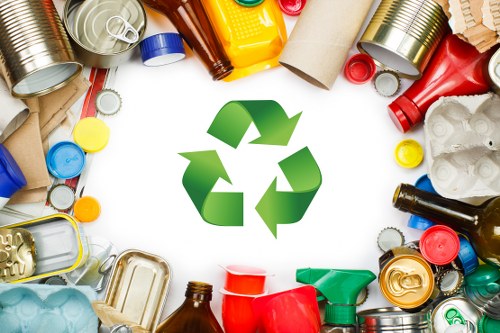
Managing the costs associated with demolition waste removal is a crucial aspect of project planning in Haringey.
Factors influencing the cost include:
- Volume of Waste: The quantity of waste generated directly affects disposal fees and transportation costs.
- Type of Waste: Hazardous or specialized waste materials may incur higher handling and disposal costs.
- Recycling Efforts: Recycling certain materials can offset some removal costs through selling reclaimed materials.
- Service Provider: The choice of waste removal service and their pricing structure impact overall costs.
- Access and Location: Sites with restricted access or those located in densely populated areas may require additional resources, influencing costs.
Effective planning and partnering with cost-efficient waste removal services can help manage and potentially reduce overall costs.
Regulatory Compliance and Penalties
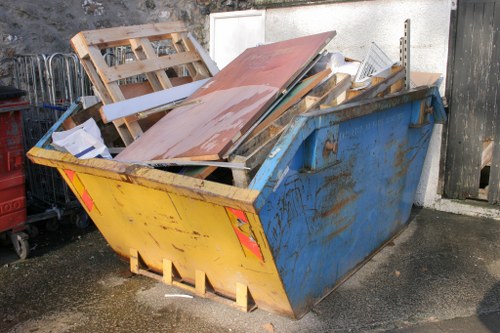
Failing to comply with Haringey's waste management regulations can result in significant penalties and legal consequences.
Common compliance issues include:
- Improper disposal of hazardous materials.
- Lack of appropriate documentation, such as Waste Transfer Notes.
- Using unlicensed waste carriers.
- Exceeding landfill capacity or recycling quotas.
- Neglecting to segregate waste correctly.
To avoid these pitfalls, it is essential to work with knowledgeable waste removal professionals who can navigate the regulatory landscape effectively.
Innovative Technologies in Waste Removal
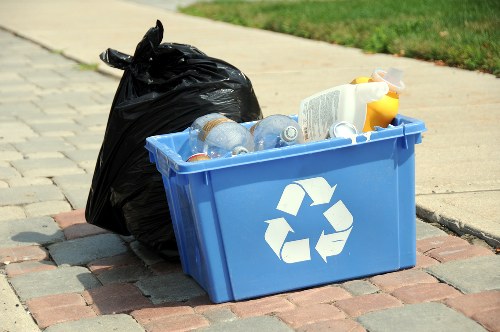
The demolition waste removal industry is evolving with the incorporation of innovative technologies that enhance efficiency and sustainability.
Some of the cutting-edge technologies include:
- Automated Sorting Systems: These systems use advanced machinery to sort waste materials quickly and accurately, improving recycling rates.
- GPS Tracking: GPS technology allows for real-time tracking of waste transportation, ensuring transparency and accountability.
- Eco-friendly Disposal Methods: New disposal techniques minimize environmental impact and promote the safe handling of hazardous materials.
- Data Management Software: Software solutions help manage waste data, optimize routes, and streamline operations.
- Recycling Innovations: Advances in recycling technologies enable the processing of previously non-recyclable materials, expanding the scope of sustainable waste management.
Adopting these technologies can significantly improve the effectiveness of demolition waste removal services in Haringey.
Case Studies and Success Stories
[IMG_11]Examining successful demolition waste removal projects in Haringey provides valuable insights into best practices and effective strategies.
Case Study 1: Residential Building Demolition
A residential complex in Haringey underwent demolition, generating significant amounts of mixed waste. By partnering with a professional waste removal service, the project achieved over 75% recycling of materials, including concrete, wood, and metals. Hazardous materials were safely disposed of, ensuring compliance with local regulations and minimizing environmental impact.
Case Study 2: Commercial Structure Redevelopment
A commercial building redevelopment project utilized advanced waste sorting technologies, resulting in efficient segregation and recycling of various materials. The project not only met its sustainability targets but also reduced overall waste disposal costs by 20%.
Tips for Effective Demolition Waste Management
[IMG_12]Implementing strategic practices can enhance the efficiency and effectiveness of demolition waste removal in Haringey.
- Early Planning: Incorporate waste management plans into the initial stages of the demolition project.
- Comprehensive Site Assessment: Identify all potential waste types and quantities to tailor the removal process accordingly.
- Engage Professionals: Collaborate with experienced waste removal services to ensure compliance and efficiency.
- Prioritize Recycling: Focus on maximizing the recycling and reuse of materials to support sustainability goals.
- Educate the Team: Ensure that all team members are aware of best practices and regulatory requirements for waste management.
Adhering to these tips can lead to a more streamlined and responsible demolition waste removal process.
The Future of Demolition Waste Removal in Haringey
[IMG_13]The future of demolition waste removal in Haringey is poised for significant advancements, driven by technological innovations and a growing emphasis on sustainability.
Key trends shaping the future include:
- Increased Recycling Rates: Efforts to improve recycling infrastructure and technologies will continue to enhance material recovery rates.
- Circular Economy: A shift towards a circular economy model encourages the reuse and repurposing of materials, reducing the need for new resources.
- Smart Waste Management: Integration of smart technologies for real-time monitoring and optimization of waste removal processes.
- Regulatory Enhancements: Evolving regulations will further tighten waste management standards, promoting higher levels of compliance and sustainability.
- Community Engagement: Increased involvement of the local community in sustainability initiatives and waste reduction programs.
Embracing these trends will ensure that Haringey remains at the forefront of responsible and innovative demolition waste management.
Conclusion
Demolition waste removal in Haringey is a critical component of sustainable development and environmental stewardship. By understanding the types of waste, adhering to local regulations, and partnering with professional waste removal services, demolition projects can achieve significant environmental and economic benefits.
As the industry continues to evolve with new technologies and sustainable practices, staying informed and proactive in waste management strategies will ensure successful and responsible demolition activities within the borough.
Contact us today to learn more about our demolition waste removal services and how we can assist you in managing your next project efficiently and sustainably.